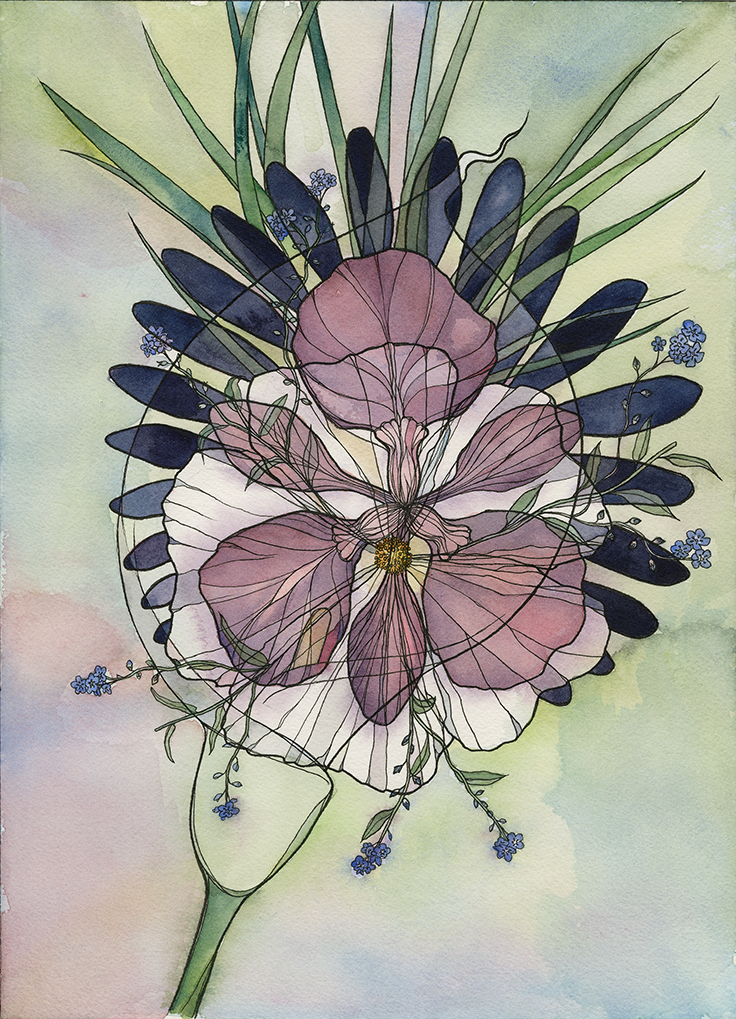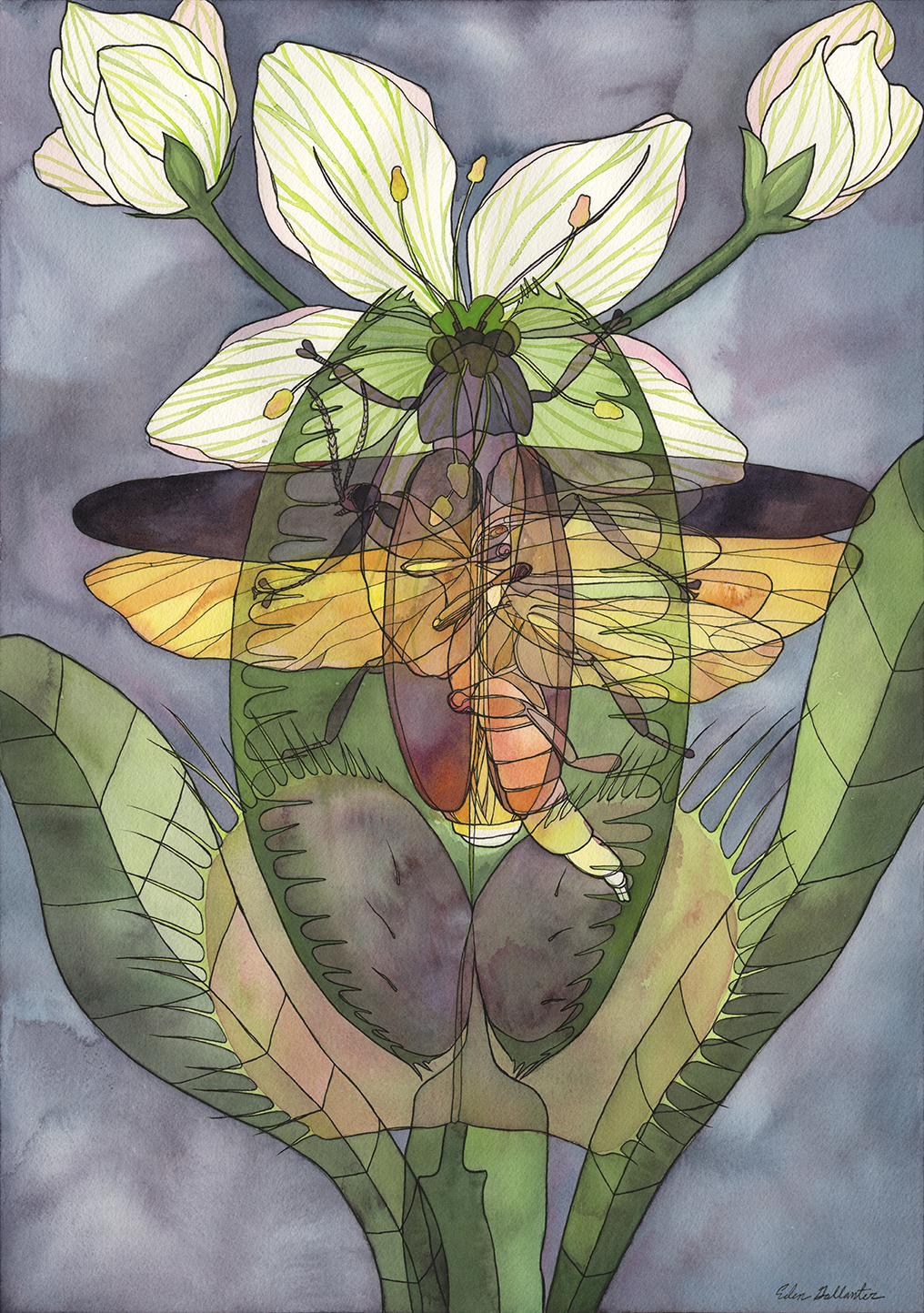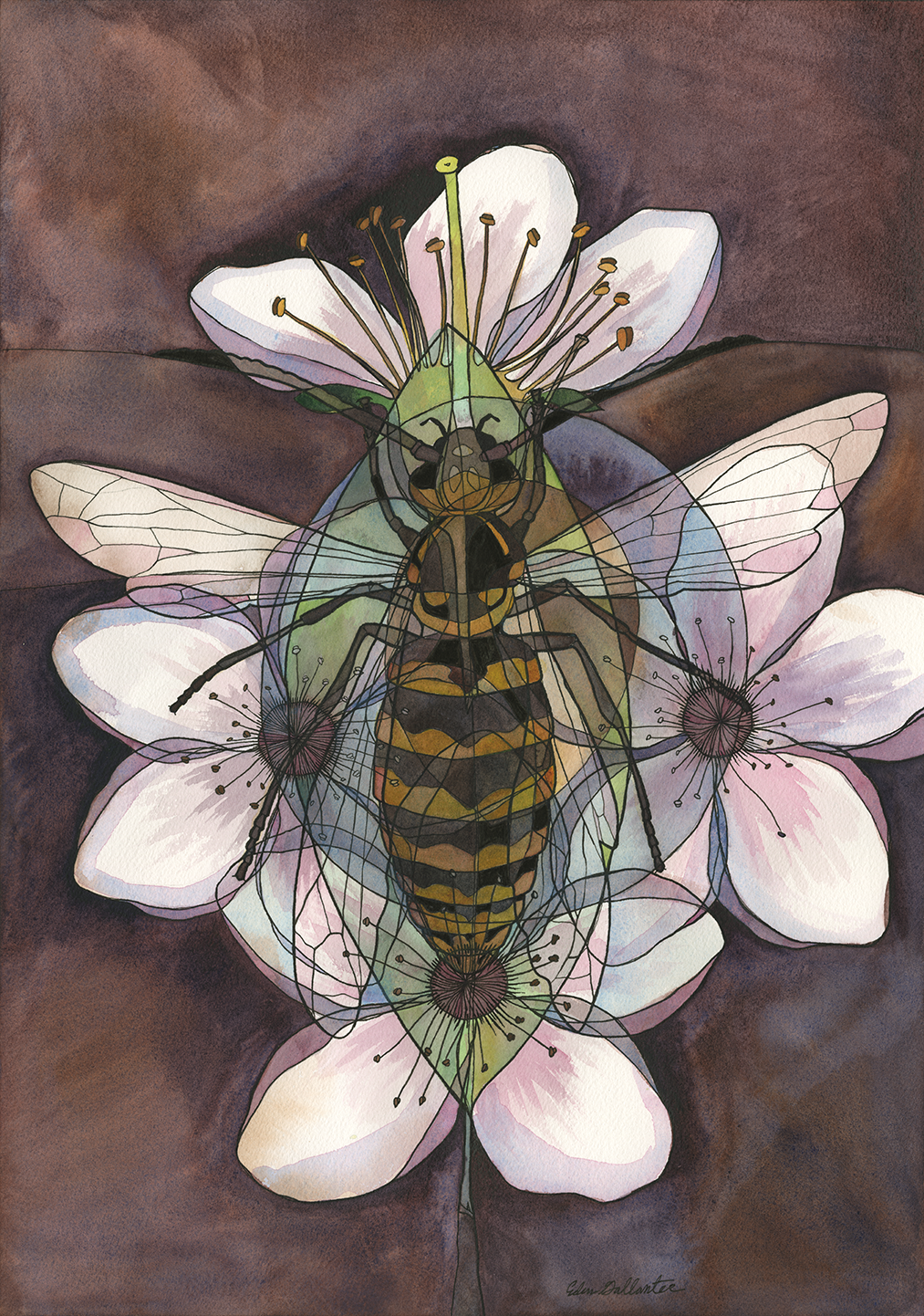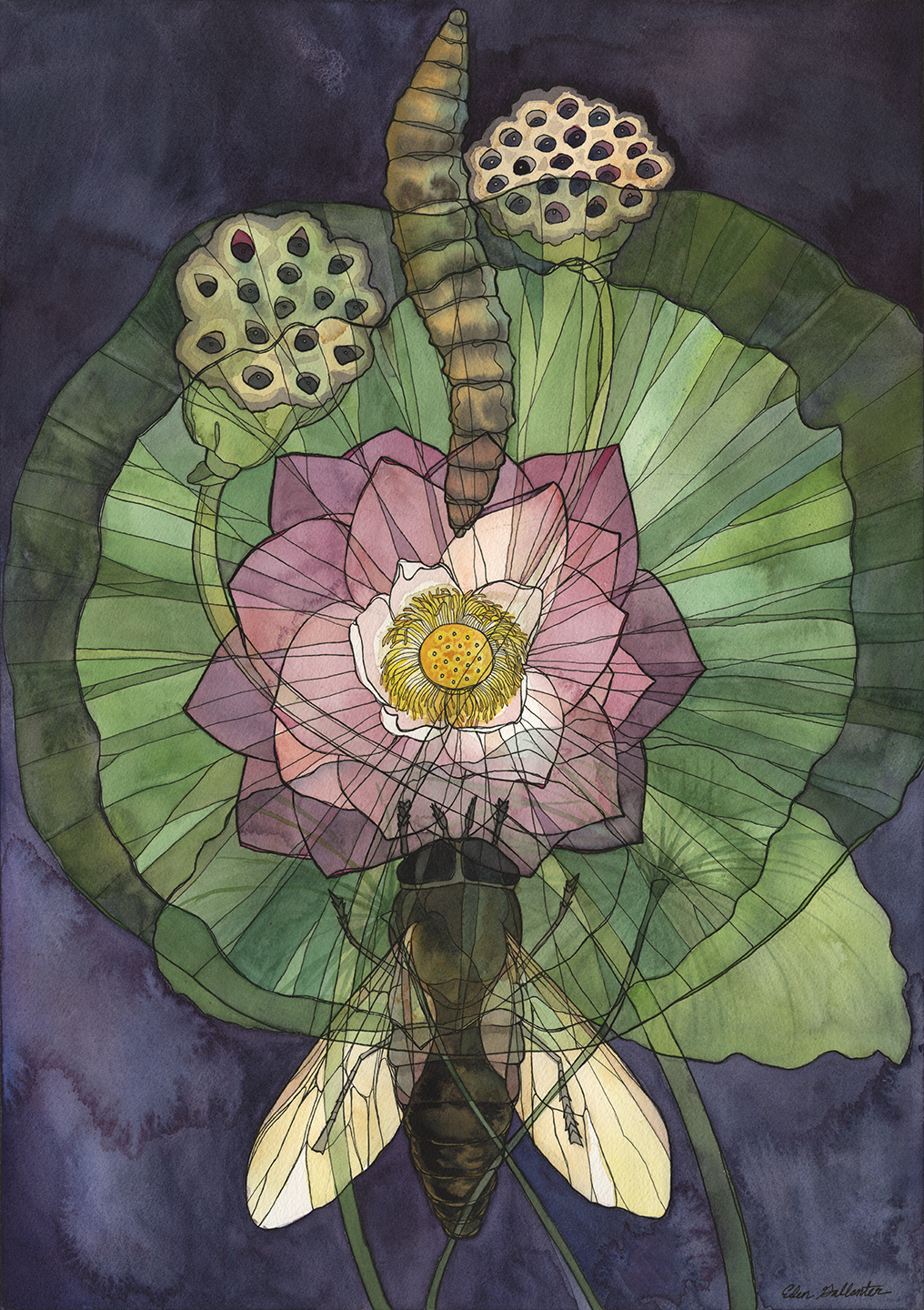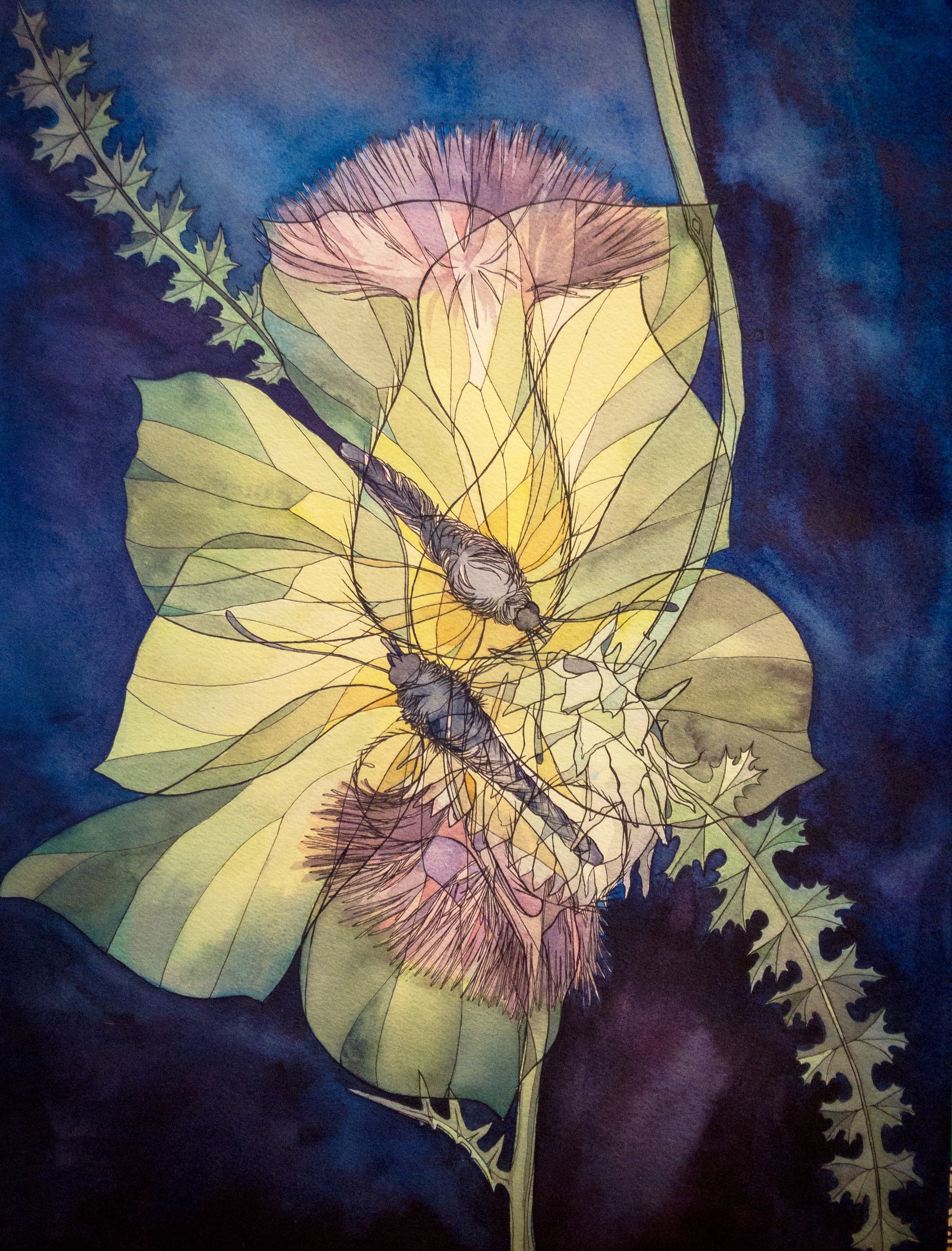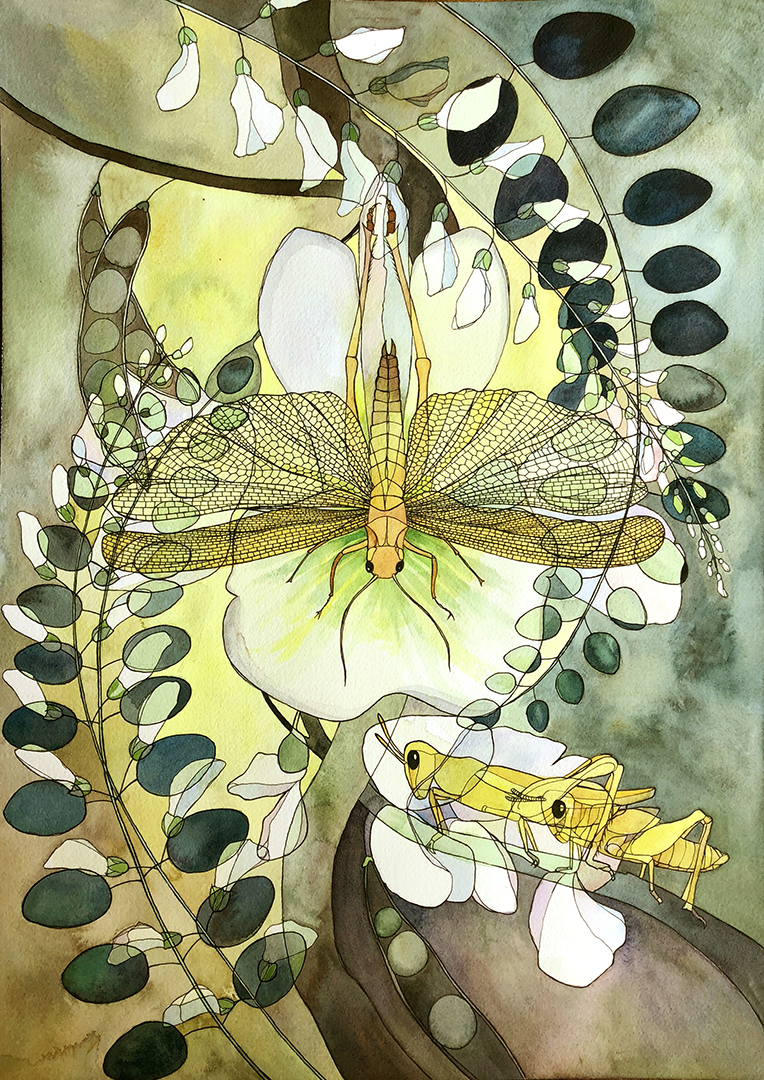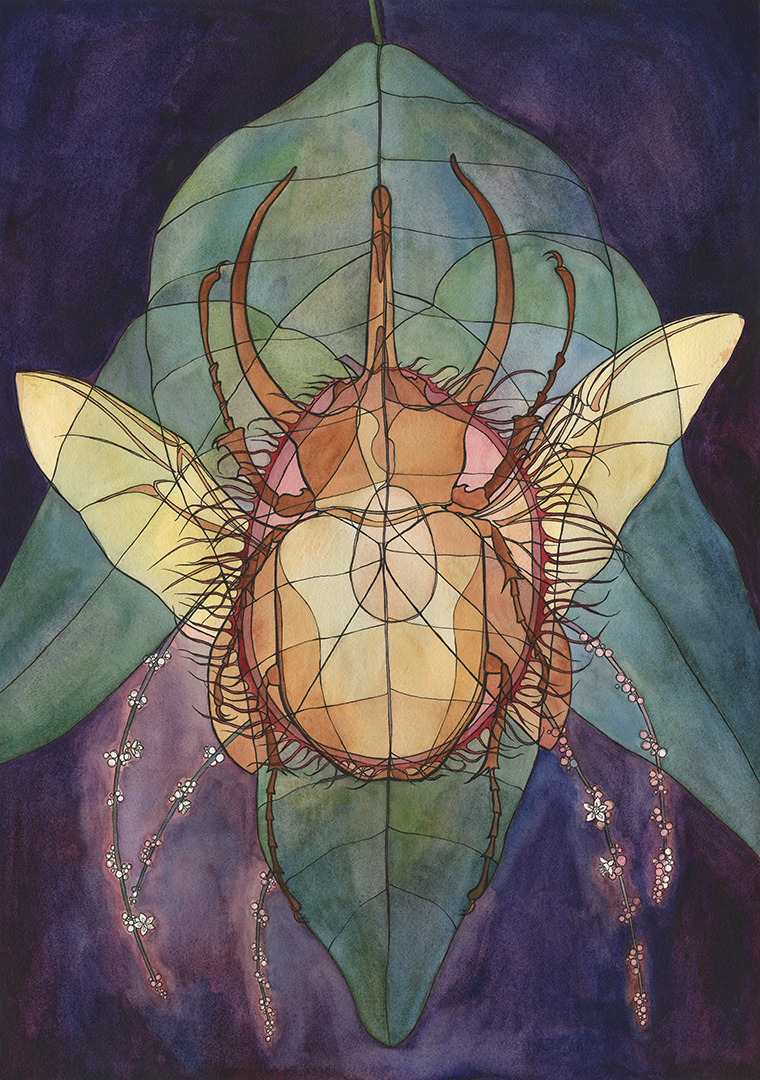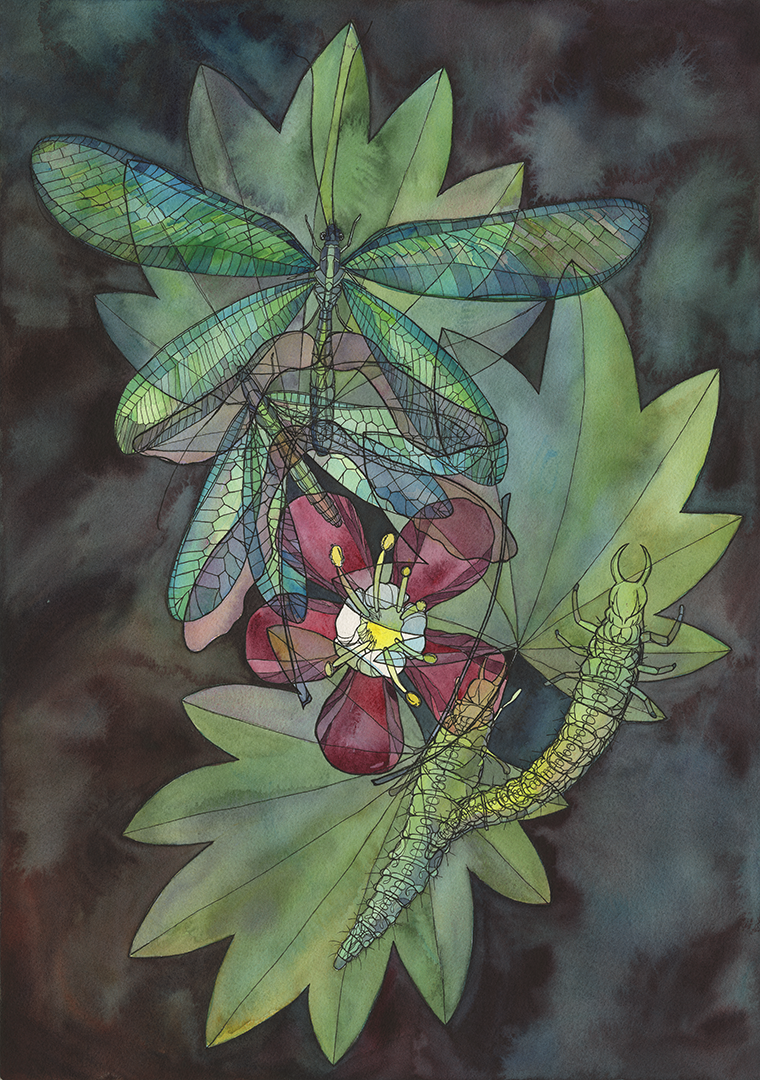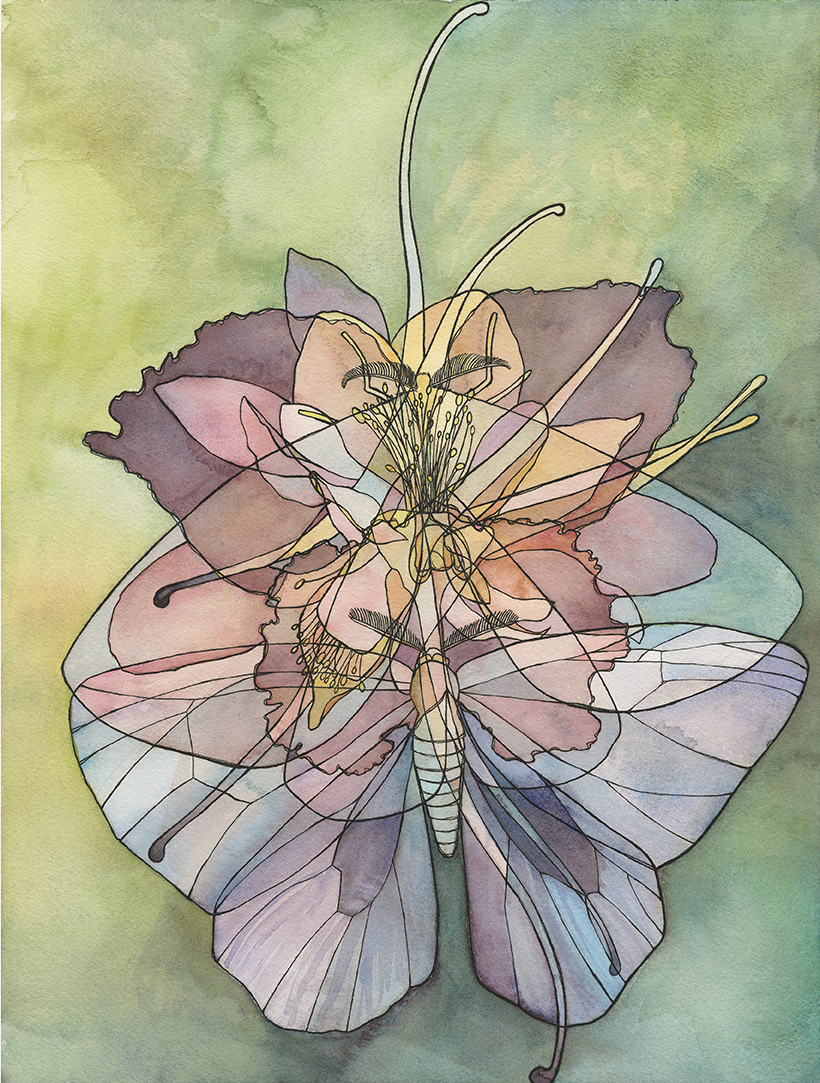The Face of the Abyss
This is a monthly newsletter about current artwork, influences, past projects, and upcoming exhibitions, often with some personal content thrown in. I will also include announcements when prints or originals are up for sale.
First, I have several exciting pieces of news:
1. I was invited to exhibit my art at Four Barrel Coffee (the Valencia Street location in San Francisco) this summer. I will be showing my "Composite Landscape" paintings, which will be for sale. Four Barrel is an independent, locally-owned coffee roastery and cafe that maintains a wonderful space for art. I'll post more about it when the show gets closer, but I'm very happy to be part of this exhibition, alongside other local landscape artists. The curator at Four Barrel asked me to make another landscape for the exhibition if I have the time and energy (he is aware that I am nine months pregnant), so I've been working on that. It's about halfway finished, based on several canyons from across the United States.
2. I finally have an online fine art store! I still have a wide variety of beautiful giclée prints for sale, and I’m selling one last original painting—"Flowers", which I painted last year. It is professionally framed in UV-protected glass, $700.00. It’s a special painting to me, as I was able to work from life instead of having to depend on photographs for reference; all flowers are from the San Francisco Botanical Garden. If you are interested in owning it, please email me!
Flowers (2018). Ink and watercolor on paper.
3. My insect/flower painting series is finished! I have now made ten lovely paintings of superimposed insect and plant pairs, each one about a different interspecies relationship. Ten paintings are enough for a solo show, and I am officially starting a slow hunt for a gallery space to show them. When I find one, the paintings will be for sale, and I will probably make a limited run of prints available as well. Don’t they all look beautiful together?
I now have eleven days until my due date, so labor could happen at any time now. Therefore, everything I start to do these days is begun with the understanding that it may be interrupted by what will probably be the most dramatic event of my life.
It's a strange way to live.
Consequently, I’m starting to do more reading than project-oriented work. Recently, I’ve been reading about Clive Wearing, the famous musician and musicologist who suffered catastrophic brain damage from herpesviral encephalitis in 1985, which left him with severe amnesia. His memory span ranges from only 7 to 30 seconds, and so is unable to form any new memories. He is currently 80 years old, and has been living in this unimaginable, present-bound reality for 34 years. His wife Deborah wrote a beautiful, astonishingly lucid and insightful book about his condition: “Forever Today: A True Story of Lost Memory and Never-Ending Love”. She describes how Mr. Wearing adapted to his condition by developing external cues that provide the temporal continuity his mind lacked: a stereotyped stream of wisecracks, familiar subjects and people (where he had better access to his old memories and felt on safer ground), and, of course, his music.
There are two separate cognitive networks for learning and memory. Fortunately for Mr. Wearing, these networks can operate independently, although in normal brain operations they generally operate in concert, supporting one another. This is how Mr. Wearing was able to adapt to his condition at all. While he could not consciously learn new information, he could learn implicitly—that is, he could form non-conscious memories that involved motor movements and action sequences, speech structures and mannerisms, and emotional response patterns. Thus, he could gain the ability to navigate a new home quite well, but he couldn’t give such direction to another person. He unconsciously began to unbuckle his seatbelt when he and his wife approached his nursing home in the car, but he was unable to consciously recognize the place as familiar.
As Deborah put it, it was as though he stood on a tiny platform, suspended over an unfathomable abyss. That platform represented his present experience, and without external cues to act as stepping stones that lead him forward—in a conversation, in an unfamiliar place, in his own thinking—he became utterly lost: insensible death closing on on all sides, endless annihilation stretching out before him.
Who else might have a special dependance on implicit memory processes? Babies and very young children are far less able to form explicit memories. For them, learning mainly consists of actions and action patterns, social-emotional development, language structures, and other non-conscious memory processes. “Infantile amnesia” is a term psychologists use to describe the phenomenon that makes memories from infancy and early childhood inaccessible later in life. To a cognitively impaired adult, the abyss is terrifying: to have a sense of self and then to lose all context for it is an existential catastrophe. To an infant, the abyss is familiar: perhaps the only familiar environment it has, at first. To an artist, a poet, a musician, or a dancer, the abyss is no more familiar than the landscape of the moon and no more terrifying than watching the sea. It is instead a valuable resource: of adventure, excitement, mystery, and inspiration.
I often feel now that I am on Mr. Wearing’s little platform, a cliff overlooking an unknowable void. Parenthood will change absolutely everything, and there is no way to know what might come. Anything at all is possible. It is, in every sense, a blind leap of faith. No one can know the abyss, but that leap of faith feels like home to me. It’s just another act of creativity: a reckless step forward into the dark, trembling with curiosity, hope, and joy.

